Ready to take your bass guitar skills up a notch? Unlock the full potential of your music by refining and deepening your existing knowledge. Whether you’re a seasoned professional or just starting out, there are certain techniques and practices that can help improve your sound and make you a better musician. In this blog post, we will be discussing various ways to practice bass guitar effectively, so that you can reach the goals you desire and build yourself into an excellent bassist. From scales and chords to tone control exercises, every aspiring bass guitarist should check out this comprehensive guide on how best to practice their instrument!
Techniques For Practicing Bass Guitar
Hammer-Ons And Pull-Offs
To move from note to note in a smooth, continuous manner, bass guitarists utilize two techniques – hammer-ons and pull-offs. To create a novel sound, pluck the string with your left hand and quickly press down on the fretboard with your right – known as a hammer-on. Pull-offs are done by plucking the string with your left hand and then lifting off of the fretboard with your right hand. Both of these techniques can help you improve dexterity and speed when transitioning between notes.
Sliding Notes
Sliding notes involves using your fretting finger to slide up or down the fretboard while pressing down on strings at different frets in order to create various notes. This is a great way to add complexity and texture to your bass playing, as you can create unique and original rhythms and melodies.
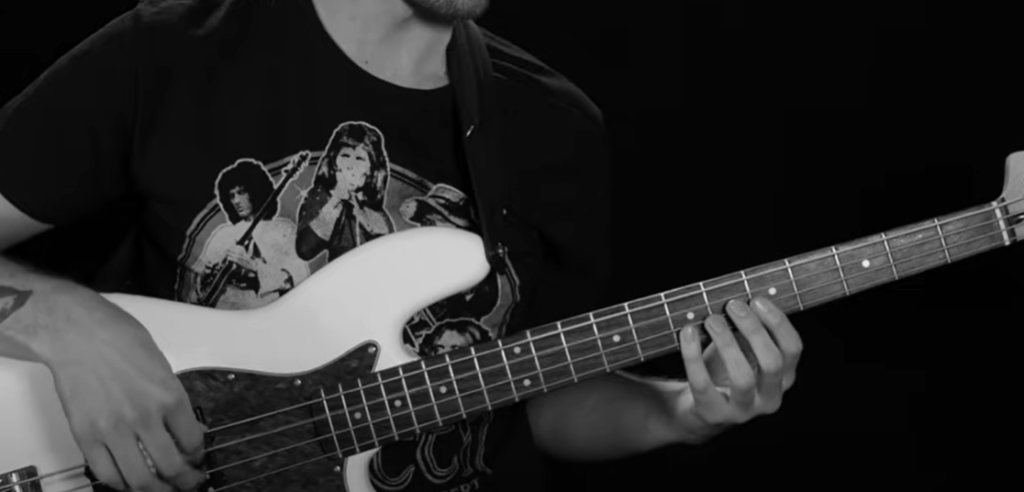
Glissando
The glissando technique is a great way to transition gracefully between notes. To execute this technique, press your finger firmly to the string and slide it up or down the fretboard all while continuing to maintain pressure. This is an essential technique for achieving smooth transitions between notes and adding extra expression to your playing.
Chords
The ability to play chords on the bass guitar is essential for playing various genres of music. Chords are created when multiple notes are played at the same time, creating a unique harmonic texture. To practice chord playing, start by learning the basics and then gradually add more complex chords as you gain confidence. It’s also important to practice arpeggios, which are broken-down versions of a chord that can help you build up speed and accuracy. [1]
Right Hand Positioning
Having correct right hand positioning is key to achieving the sound you want from your bass guitar. Your thumb should be placed behind the neck of the bass, and your other fingers should be spread out and curved slightly so that they can press down on the strings with accuracy. Experimenting with different positions will help you find what works best for you.
Scales
Learning scales on the bass guitar is essential for any style of playing, as it gives you a solid foundation for understanding harmony and music theory. Practicing scales also helps develop finger independence, coordination, and speed when transitioning between notes. Start by learning the major scale and then gradually move onto other more complex scales such as pentatonic or chromatic scales.
Pedaling
Pedaling is a technique used on the bass guitar to achieve a thicker, richer sound. To do this, pluck one string and then quickly move your finger back and forth between two adjacent frets while sustaining the note. This technique adds texture and complexity to your playing, as it creates multiple notes at once. It’s an essential technique for any bass player looking to add extra texture to their playing.
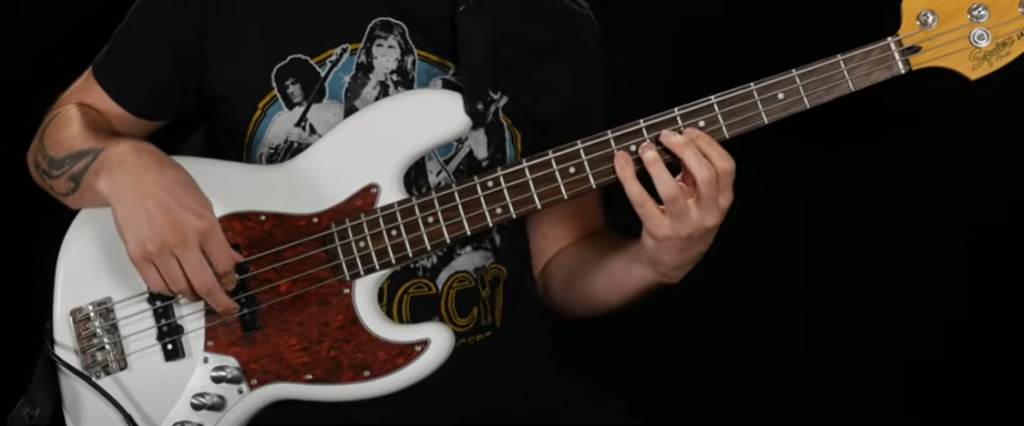
Harmonics
Harmonics are created when a note is played by lightly touching the string at specific points along its length. To practice harmonics, start by learning where to place your fretting finger and then gradually add more complex techniques such as pinch harmonics or tapped harmonics.
String Skipping
String skipping is a technique used to quickly move between notes on different strings. To do this, pluck one string and then quickly move your fretting finger onto the next string without having to play any of the strings in between. This is a great way to add complexity and speed to your playing, as it allows you to transition seamlessly between notes. [2]
Tips for Bass Guitar Players
Set Your Goals
It’s important to have a realistic idea of what you want to achieve with your bass playing. Establish both short-term and long-term objectives to spur you on your journey of progress and aid in forming a motivation for success.
Practice Smart
Quality practice is more important than quantity when it comes to learning the bass guitar. Don’t just mindlessly play through songs – make sure you are focusing, concentrating, and learning something new every time you pick up your instrument. Make sure each practice session has a specific purpose and focus on the areas that need work or improvement most.
Learn Music Theory
Knowledge of music theory is essential for any musician, but especially for bass players since they are often the ones responsible for keeping things in time and creating interesting grooves. Spend some time learning the basics of music theory and how it applies to bass playing.
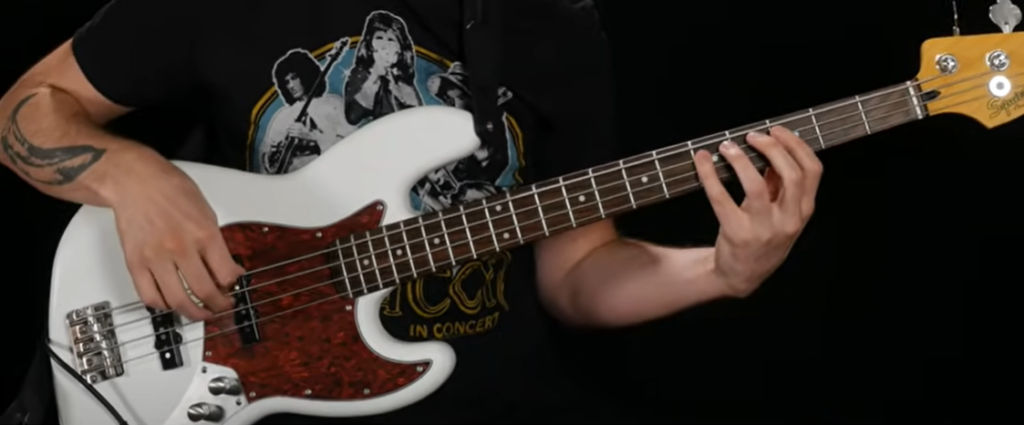
Break Out Of Your Comfort Zone
Don’t just stick to what you know – take some risks and break out of your comfort zone when practicing or performing on the bass guitar. Try something new and unexpected, such as a different scale, sound effect, or style of playing. This will help you become a more well-rounded musician.
Listen To Recordings
Take the time to listen to recordings of professional bass players in order to get an idea of what great bass lines sound like. Listen for tone, vibrato, dynamics, timing, and other characteristics that will help inform your own playing style.
Get Professional Guidance
Sometimes it’s helpful to have an experienced bass player or instructor to help guide you. A professional can help point out strengths and weaknesses in your playing, suggest practice techniques, and offer invaluable insight into the instrument.
Practice with a Metronome
Using a metronome is one of the best ways to ensure that your timing is on point when playing the bass guitar. Start off slowly, then gradually increase the tempo until you are comfortable with each beat or phrase.
Have Fun!
At the end of the day, playing bass guitar should be enjoyable. Have fun with it and don’t take yourself too seriously. Try new things, jam with friends, or just let loose and express yourself through music. There’s no wrong way to play the bass! [3]
Stay Committed
Finally, make sure you stay committed to improving your bass skills over time. It takes a lot of hard work and dedication to become a great bass player – if you keep at it, you’ll be amazed at what you can achieve!
By following these tips and making practice a regular part of your routine, you can become an accomplished bass player in no time! With dedication and hard work, you will be able to reach your goals and become a great musician.
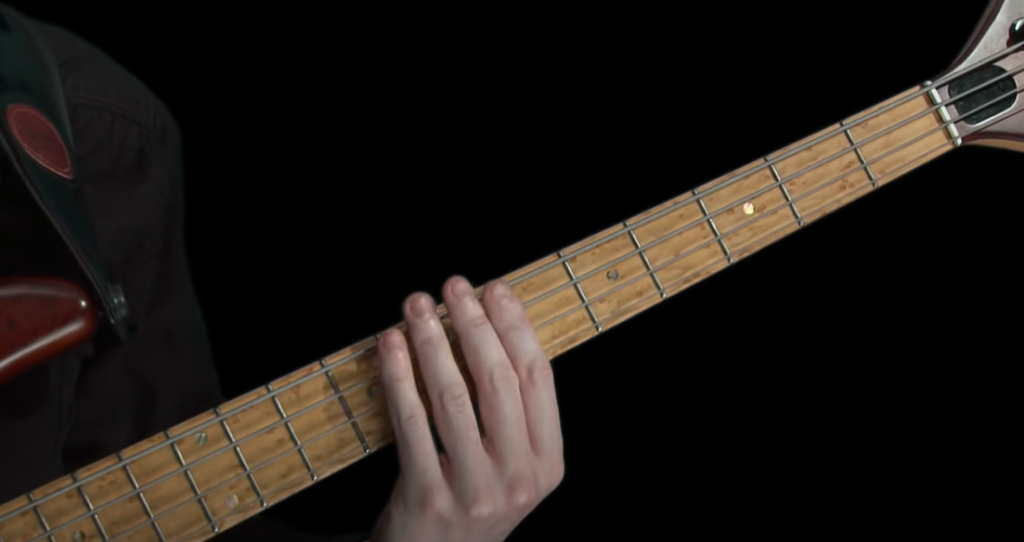
Know The Difference Between Playing And Practice
As a bass guitar player, it is important to understand the difference between playing and practicing. Playing is when you go on stage or jam with friends – it should be a fun and rewarding experience that enables you to show off your skills. Practice, however, is where you hone those skills in order to become better at what you do. It requires discipline and dedication to master the art of bass guitar playing; without practice, your playing will never reach its full potential.
When practicing, break up complex techniques into smaller exercises that are easier to learn. This will help make sure that each new piece of information is understood before moving on. You can also practice by learning songs from start to finish, so you can build upon the same concepts over and over again.
Finally, be sure to take regular breaks when practicing, as this will help you to stay focused. A well-structured practice routine is essential if you are going to refine your skills as a bass player. Follow these tips and pretty soon you’ll be playing like a pro! [4]
Benefits of Playing Bass Guitar
Playing bass guitar can provide a range of benefits to you as an aspiring musician. Not only will mastering the instrument improve your skills as a guitarist, but it can also help open doors to new opportunities. Here are some of the main advantages of playing bass guitar:
- Music Theory Knowledge: Playing bass guitar gives you an opportunity to learn more about music theory in depth and better understand how chords and scales fit together. This knowledge can be used to develop your own unique style and approach when jamming with other musicians or composing songs.
- Increased Groove Potential: The low frequency range of the bass provides a deep groove which helps to give any song its rhythm and soul. Mastering this instrument allows you to create interesting, driving grooves to give every song your own personal touch.
- Develop Your Playlist: Bass guitar can be used to create a variety of genres from rock and metal to funk, jazz, blues and soul. Learning how to play this instrument will help you develop your own unique playlist for jamming or performing live.
- More Ear Training: Playing the bass requires you to listen more closely than other instruments. You need to be able to identify and distinguish between different notes and rhythms in order to successfully keep up with the rest of the band. This is great ear training which can help improve your overall musicianship.
- Creative Outlet: The bass provides an excellent creative outlet as it is often used to fill in the gaps between vocals and other instruments, allowing you to get creative with your sound. You can use it to bring new ideas and accents into a song or simply provide a solid foundation for the rest of the band.
Ultimately playing bass guitar provides a great opportunity to improve your musical skills, learn more about music theory, develop your playlist and open up creative doors. With enough practice and dedication you can become an expert bassist in no time! [5]
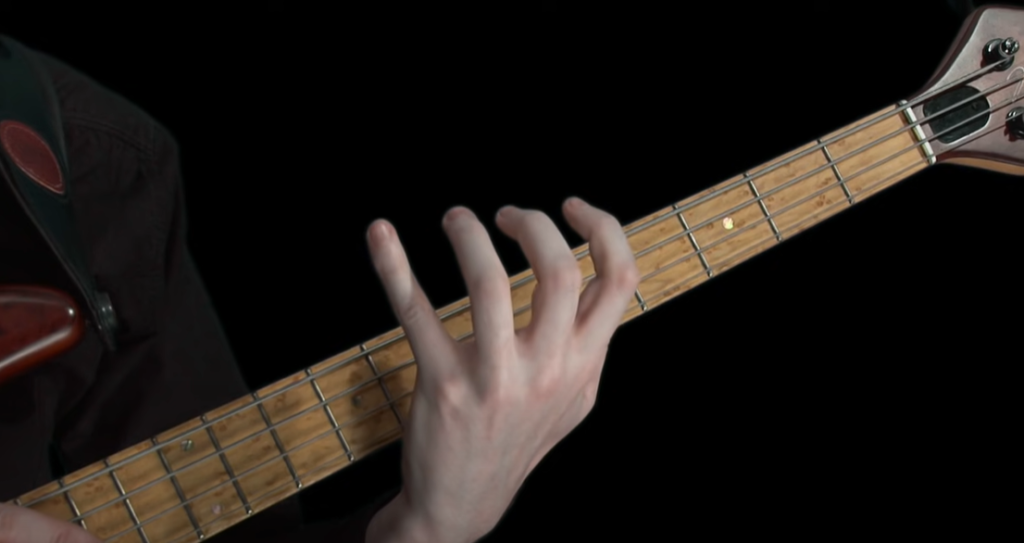
Groove Mastery: Essential Techniques for Bass Guitar Practice
Unlock the rhythmic potential of the bass guitar with these detailed practice techniques. Dive into this comprehensive comparison table, featuring key elements such as technique focus, skill level, musical applications, recommended tempos, and additional insights to enhance your proficiency on the bass guitar.
| Technique | Technique Focus | Skill Level | Musical Applications | Recommended Tempos (BPM) | Additional Insights |
|---|---|---|---|---|---|
| Fingerstyle Technique | Finger Plucking, Slapping | Beginner-Advanced | All Genres | Varies (Slow to Fast) | Focus on Consistent Tone, Experiment with Finger Placement |
| Thumb Technique | Thumb Plucking, Popping | Intermediate-Advanced | Funk, R&B | Medium to Fast | Emphasize Groove, Practice String Skipping |
| Slap and Pop | Slapping, Popping | Intermediate-Advanced | Funk, Rock | Medium to Fast | Master Articulation, Use Thumb for Slaps and Fingers for Pops |
| Double Thumb Technique | Double Thumb Plucking | Advanced | Jazz Fusion, Progressive | Fast | Develop Thumb Independence, Focus on Smooth Transitions |
| Tapping | Fretboard Tapping | Advanced | Experimental, Fusion | Fast | Explore Harmonics, Use Fingers for Fluid Tapping |
Explanation:
- Fingerstyle Technique: Covers finger plucking and slapping suitable for all genres, applicable to all skill levels. Focus on consistent tone, and experiment with finger placement for different textures.
- Thumb Technique: Involves thumb plucking and popping, ideal for funk and R&B, suitable for intermediate to advanced players. Emphasize groove and practice string skipping for dynamic basslines.
- Slap and Pop: Incorporates slapping and popping for funk and rock genres, recommended for intermediate to advanced players. Master articulation and use the thumb for slaps and fingers for pops.
- Double Thumb Technique: Advanced technique involving double thumb plucking, suited for jazz fusion and progressive styles. Develop thumb independence and focus on smooth transitions between notes.
- Tapping: Advanced technique featuring fretboard tapping for experimental and fusion genres. Explore harmonics and use fingers for fluid tapping movements.
Choose a bass guitar technique from this table to infuse your playing with groove and precision, advancing your skills to new heights.
FAQ
What is the best way to practice bass?
The best way to practice bass is to develop a consistent and thoughtful daily practice routine. Start by focusing on a few fundamentals, such as scales and chords, and then build from there. Break your session into short chunks of time (30 minutes or so) and focus on one particular technique or exercise each time. Be sure to take breaks throughout the session to rest your hands and mind. Additionally, it’s important to vary your exercises and challenge yourself with new techniques in order to keep progress steady. The best way to practice bass is to focus on building fundamental skills, such as accuracy and speed. Start by playing with a metronome set at a slow tempo and gradually increase the tempo over time as your skill level increases. You should also break down difficult passages into individual notes and practice them separately before putting it all together. Additionally, try learning songs from different genres of music to keep things interesting and challenge yourself in new ways. Lastly, make sure you are taking regular breaks so that you don’t get too burned out or discouraged.
How can I improve my picking technique?
Improving your picking technique requires dedicated practice and patience. Begin by using alternate picking with your right hand while plucking the strings with your left hand. Make sure you are using a consistent motion, and that your pick is perpendicular to the string for maximum control. When alternating picking between two strings, it’s important to use strict alternate down-up motions in order to build speed and accuracy. Additionally, practice playing scales and arpeggios slowly in different registers of the neck until they become second nature. You can also use various drills such as double stops, or repeating notes on different strings while keeping tempo steady. Lastly, be sure to take regular breaks during practice sessions so that you don’t get too frustrated or overwhelmed by the process.
What tips do I need to know before playing bass?
Before playing bass, there are a few essential tips to keep in mind. First and foremost, make sure you have a comfortable instrument that is properly set up for your playing style. A good bass should be lightweight and easy to play, with strings that are the right tension for your level of playing. Additionally, practice proper posture–stand with feet shoulder-width apart or slightly wider and hold your arm close to the body while playing. Lastly, don’t forget to use a pick when needed; it will give you more control over the sound and dynamics of your playing.
Can bass be self taught?
Yes, bass guitar can definitely be self-taught. All it takes is dedication and patience to develop the skills needed to play bass confidently. Start by focusing on basic techniques such as scales and chords and gradually build from there. Additionally, make sure to incorporate exercises like alternate picking, double stops, and arpeggios into your practice routine in order to keep progress steady. Last but not least, take regular breaks while practicing so that you don’t get too frustrated or discouraged. With consistent effort and determination, it is absolutely possible to become a great bass player without lessons!
Are there any tips for playing funk bass?
Yes! Playing funk bass requires a certain level of groove and “feel” that can be difficult to master. One of the most important tips is to make sure your notes are tight, with a clear attack on each note and a smooth decay. Additionally, funk bass lines often utilize slides and hammer-ons for added expression–practicing these techniques will help you achieve the desired sound. A good way to get started is by transcribing funk songs or improvising over simple chord progressions. Lastly, be sure to practice regularly and keep things interesting by exploring different styles of funk music.
Why is bass difficult?
Bass can be difficult due to the complexity of the instrument and its many nuances. Unlike guitar, bass involves playing multiple strings at once, which takes time and practice to master. Additionally, because bass is such an integral part of most musical styles, there are a wide range of techniques that need to be learned in order to play effectively. This can include fingerpicking or slapping for funk music, as well as alternate picking and double stops for rock or jazz. Lastly, it’s important to have good timing and groove so that your performance has a sense of flow–this requires dedicated practice in order to internalize the rhythms and patterns associated with each style of music.
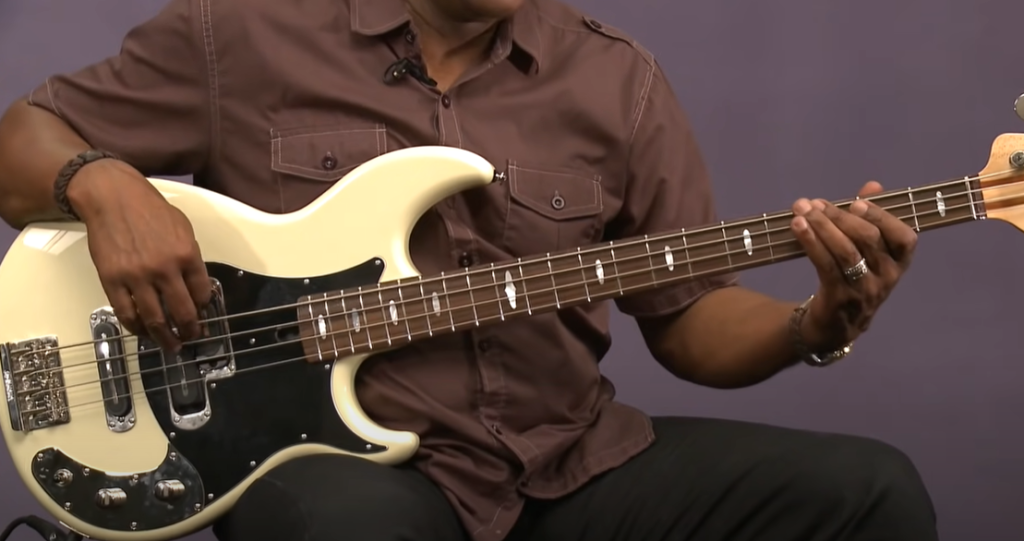
Can I learn bass in 3 months?
Learning to play the bass guitar is an immense undertaking, and expecting to learn it in three months is highly ambitious for a beginner. That being said, with hard work and dedication, it is possible to make significant progress over that amount of time. One of the best ways to ensure quick improvement while learning bass guitar is to keep practicing consistently over a regular period of time. By setting aside even just 30 minutes each day dedicated solely to playing bass can make a huge difference in your progress. Additionally, breaking down practice sessions into short but frequent chunks allows you to focus intensely on specific techniques or songs rather than getting overwhelmed by trying to do too much all at once. It’s also important to remember that every musician develops at their own pace, so don’t put too much pressure on yourself to learn quickly. Instead, celebrate each achievement and milestone as you make progress!
Is bass actually easier than guitar?
This question is not an easy one to answer, as everyone’s skill level and needs are different. Generally speaking though, most people would agree that bass guitar is easier than regular guitar in the beginning stages. The main reason for this is the fact that bass lines typically involve playing fewer notes at a time, with less complex rhythms. This makes it simpler to learn how to play bass satisfactorily, compared to the amount of material guitarists must master before they can feel competent with their instrument.
How many hours a day should I practice bass guitar?
The amount of time you should practice bass guitar depends on how dedicated you are to mastering the instrument. Most beginners can benefit greatly from devoting at least one hour a day to practicing and perfecting their skills. However, if you are looking to make more rapid progress, then it might be beneficial to increase your practice time up to two or three hours per day. Additionally, taking regular breaks while practicing can help keep your mind fresh and ensure that you don’t become too overwhelmed with all the new material.
What techniques should I use when playing bass?
When learning bass guitar, there are several key techniques which will help improve your playing ability quickly. One of the most important is finger dexterity, which involves using different finger combinations for each note you play. This will ensure that your hand movements are smooth, fluid and precise. Additionally, it’s important to listen carefully as you practice so you can hear what notes sound right against each other. Finally, take the time to learn some basic scales or riffs which can be used as building blocks for more advanced playing techniques.
Can you learn bass by ear?
Absolutely! Many great bass players have learned to play without formal music instruction. To learn by ear requires regular practice, patience and dedication. The best way to start learning bass by ear is to begin with a simple song or riff that you already know. Break the song down into its individual parts, such as the low end, mid-range and high end of the melody. Listen carefully to each part and try to replicate it on your own instrument. As you become more familiar with the tune, start adding small variations each time you play it until you’ve created your own unique version of the song.
How can I effectively practice fingerstyle techniques on the bass guitar?
Practicing fingerstyle techniques on the bass involves developing strength, speed, and precision in your fingers. Start with basic exercises, such as playing scales and arpeggios using your fingers instead of a pick. Focus on maintaining consistent tone and rhythm. Gradually introduce more advanced techniques like ghost notes and slapping to diversify your fingerstyle playing. Regular and focused practice will help you build proficiency and fluidity in fingerstyle bass techniques.
What exercises can I use to enhance my fretting hand agility and finger independence on the bass guitar?
To enhance fretting hand agility and finger independence, practice scales, and exercises that involve string skipping, position shifts, and varied finger patterns. Work on chromatic exercises, stretching exercises, and patterns that involve using different fingers on the fretting hand. Gradually increase the complexity of the exercises to challenge your finger independence and improve overall agility on the bass guitar.
How do I develop my slap and pop techniques on the bass guitar?
Developing slap and pop techniques involves practicing basic percussive slapping and popping motions. Start with simple exercises focusing on precision and timing. Practice slapping with the thumb and popping with your fingers, aiming for a consistent and percussive sound. Experiment with varying intensities and speeds to achieve different tones. Incorporate slap and pop techniques into basslines and songs to enhance your overall proficiency and musicality.
Can you suggest effective ways to improve my bass guitar groove and timing?
To improve bass guitar groove and timing, practice playing along with metronomes, drum tracks, or backing tracks in various styles. Focus on locking in with the rhythm and maintaining a steady tempo. Work on playing simple basslines and gradually add complexity as your timing improves. Analyze and study the grooves of experienced bass players in different genres to understand how they achieve a tight and rhythmic feel. Consistent practice and exposure to different rhythmic patterns will contribute to enhancing your groove and timing on the bass guitar.
What techniques should I focus on to improve my bass guitar dynamics and expressiveness?
To improve bass guitar dynamics and expressiveness, experiment with varying your playing intensity, articulation, and note duration. Practice playing passages with a range of dynamics, from soft and subtle to loud and aggressive. Experiment with using techniques like slides, bends, and vibrato to add expressiveness to your playing. Listening to experienced bassists and studying their use of dynamics in different genres can also provide valuable insights for enhancing your own expressiveness on the bass guitar.
Useful Video: KILLER Bass Workout For All Levels
Conclusion
Practicing bass guitar is an essential part of becoming a better musician. Without practice, you can’t expect to be able to play difficult songs or develop your skills as a bassist. By incorporating some of the techniques outlined above, such as playing scales, learning chords and working on technique, you’ll find that your progress will accelerate quickly. With consistent practice and dedication, you can become an excellent bass player in no time at all! So don’t wait any longer; start practicing today!
Good luck!
References:
- https://jamplay.com/weekend-warrior/w/the-top-10-tips-for-practicing-bass
- https://play-guitars.com/practicing-bass-guitar/
- https://online.berklee.edu/takenote/bass-players-how-to-practice-bass-effectively-pt1/
- https://onlinebasscourses.com/turning-pro/100-pro-tips-to-improve-your-bass-playing/
- https://www.thomann.de/gb/onlineexpert_page_bass_guitars_the_most_important_bass_playing_techniques.html




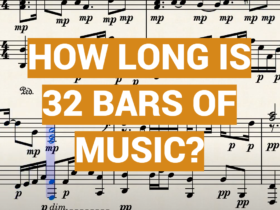
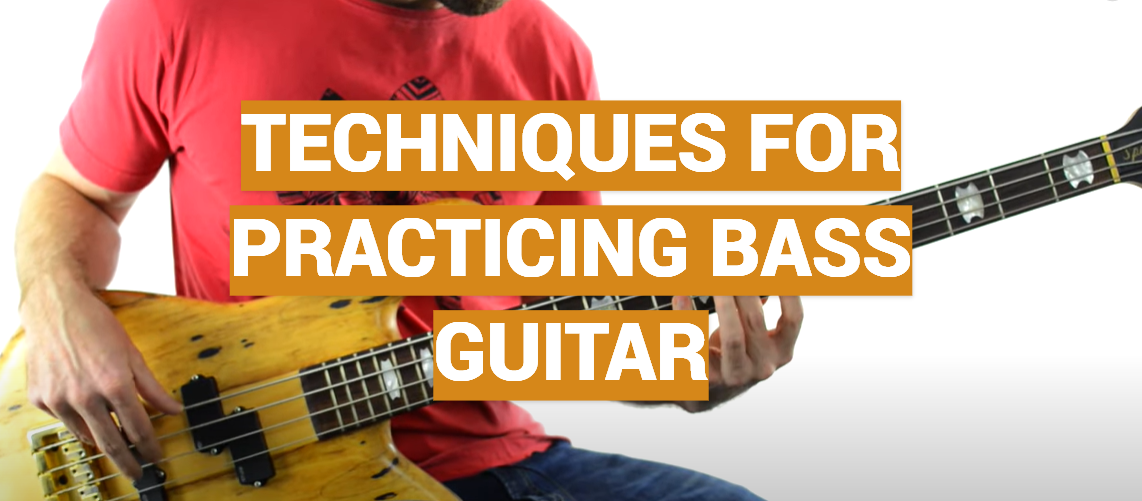




Leave a Reply